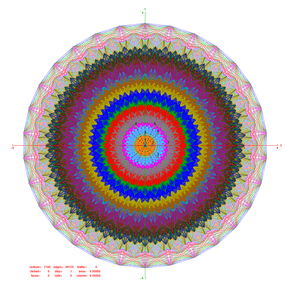2 41 polytope
Its Coxeter symbol is 241, describing its bifurcating Coxeter-Dynkin diagram, with a single ring on the end of the 2-node sequences.
The birectified 241 is constructed by points at the triangle face centers of the 241, and is the same as the rectified 142.
This polytope is a facet in the uniform tessellation, 251 with Coxeter-Dynkin diagram: The 2160 vertices can be defined as follows: It is created by a Wythoff construction upon a set of 8 hyperplane mirrors in 8-dimensional space.
Seen in a configuration matrix, the element counts can be derived by mirror removal and ratios of Coxeter group orders.
240 t1(221) 17280 t1{36} 2160 141 The rectified 241 is a rectification of the 241 polytope, with vertices positioned at the mid-edges of the 241.
It is created by a Wythoff construction upon a set of 8 hyperplane mirrors in 8-dimensional space, defined by root vectors of the E8 Coxeter group.


- u = (1, φ , 0, −1, φ , 0,0,0)
- v = ( φ , 0, 1, φ , 0, −1,0,0)
- w = (0, 1, φ , 0, −1, φ ,0,0)

